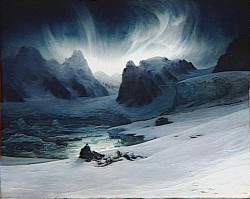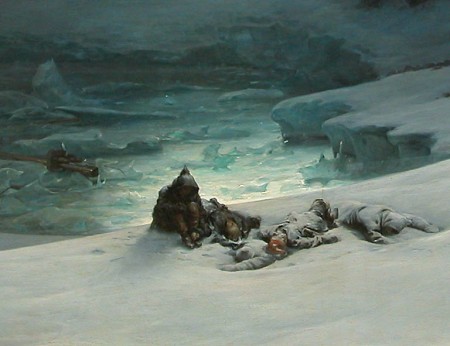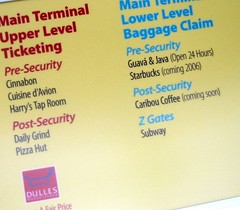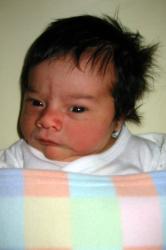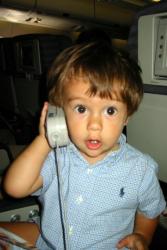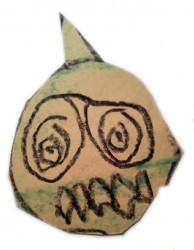 Classes are over, final projects are coming in, and I’ve just wrapped up another year of my high-flying, jet-setting lifestyle. Which is just a sexier way of saying I commute. Which is just shorthand for: every Tuesday I wake up at 5am, drive 30 miles to Charlotte Douglas International Airport, fly at dawn to Washington Dulles International Airport, get myself over to George Mason’s campus, where I teach, advise, write, collaborate, work, eat, and occasionally sleep until Thursday at 7:45pm, when I fly back to Charlotte, making it home in the best of times by 10:30pm. And then I repeat the following week. And the week after that. And so on.
Classes are over, final projects are coming in, and I’ve just wrapped up another year of my high-flying, jet-setting lifestyle. Which is just a sexier way of saying I commute. Which is just shorthand for: every Tuesday I wake up at 5am, drive 30 miles to Charlotte Douglas International Airport, fly at dawn to Washington Dulles International Airport, get myself over to George Mason’s campus, where I teach, advise, write, collaborate, work, eat, and occasionally sleep until Thursday at 7:45pm, when I fly back to Charlotte, making it home in the best of times by 10:30pm. And then I repeat the following week. And the week after that. And so on.
Minus one year my wife was on sabbatical from her institution, when we moved the entire family up to Fairfax, and minus another year when I was half on sabbatical and half on personal leave, I’ve been doing this Tuesday through Thursday commute since 2005. It seems that every year I attempt to make sense of commuting in a new way. Last year I tried to be practical about it. Another year I tried to be funny. Once I wrote poems assembled from the caution signs on airplane wings.
This year I’m simply going to be honest.
The commute is costing me the one treasure I can never get back: time.
Friends, families, and colleagues often say to me, You’re away from home two nights a week? That’s not so bad. It could be a lot worse.
Dear friends, families, and colleagues: this is the worst possible thing you could say to me, my wife, or my children.
Two nights a week? It could be a lot worse.
To those who mean well but nevertheless end up minimizing the difficulty of my weekly commute, let me do some math for you.
I have two semesters. Each semester is fifteen weeks long. I’m away from my family three days and two nights every single one of those weeks. Throw in a couple of other nights when I’ve had to be away for flight cancellations, extra travel time, and extraordinary commitments bringing me to campus early or keeping me late. Add it up, and I’ve been away from my home just over ninety days and sixty nights since August 2010.
Now look me in the eye and try to minimize the pain and sorrow of missing two months of my sons’ lives. Three months, if you count the days. Three months is hard enough to be apart from my wife, but we’re adults, and we made the decision together to be an academic commuter couple, at least for a while. But three months means something entirely different when children are involved, a four- and six-year-old, making great physical, cognitive, and social leaps in a matter of weeks—even in a matter of days. Imagine missing crucial milestones, the kind we usually celebrate with hugs and kisses, joy and smiles. Imagine leaving behind your most cherished loved ones two or three months out of every year. Compound this absence by four, the number of years I’ve had to travel, and I’ve missed an entire year of my children’s daily lives. A year when I was not there.
Certainly there are people who are away from their families more than I am. Soldiers on extended tours of duty, businessmen and women traveling across the globe. Diplomats, spies, the pilots of the planes themselves. But I am neither making a sacrifice in the name of my country nor earning a generous salary that allows me to buy figments of happiness. I’m a poor English professor, teaching and studying words, images, and ideas.
That I love my career—working with kind and collegial people, teaching engaging and challenging courses— only makes the commute harder. Sweet as well as bitter. Several months ago, in the dead of winter, the bitterest time of the semester, I wrote on Twitter:[blackbirdpie url=”http://twitter.com/samplereality/statuses/33364830542893056″]
Now it’s spring, now it’s May. And there is the summer to rejuvenate, to be present. But the shadow of another semester already looms ahead, and my mind is soaked through even now with work and writing that calls me away from my family though I’m still home. The hard enough grows harder, and it never gets easy.
[Crazy Sad Face Drawing by my son, Niko]
